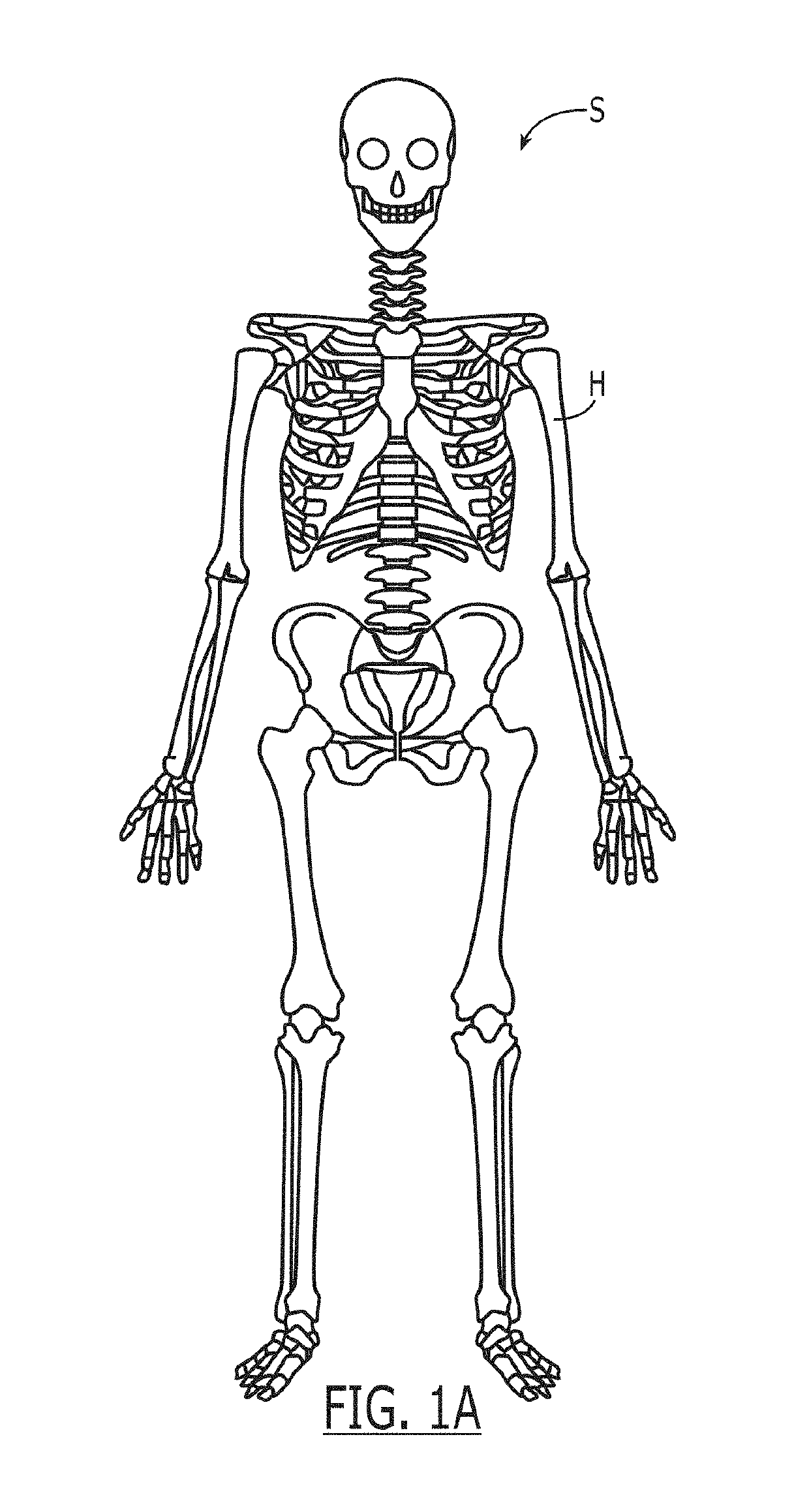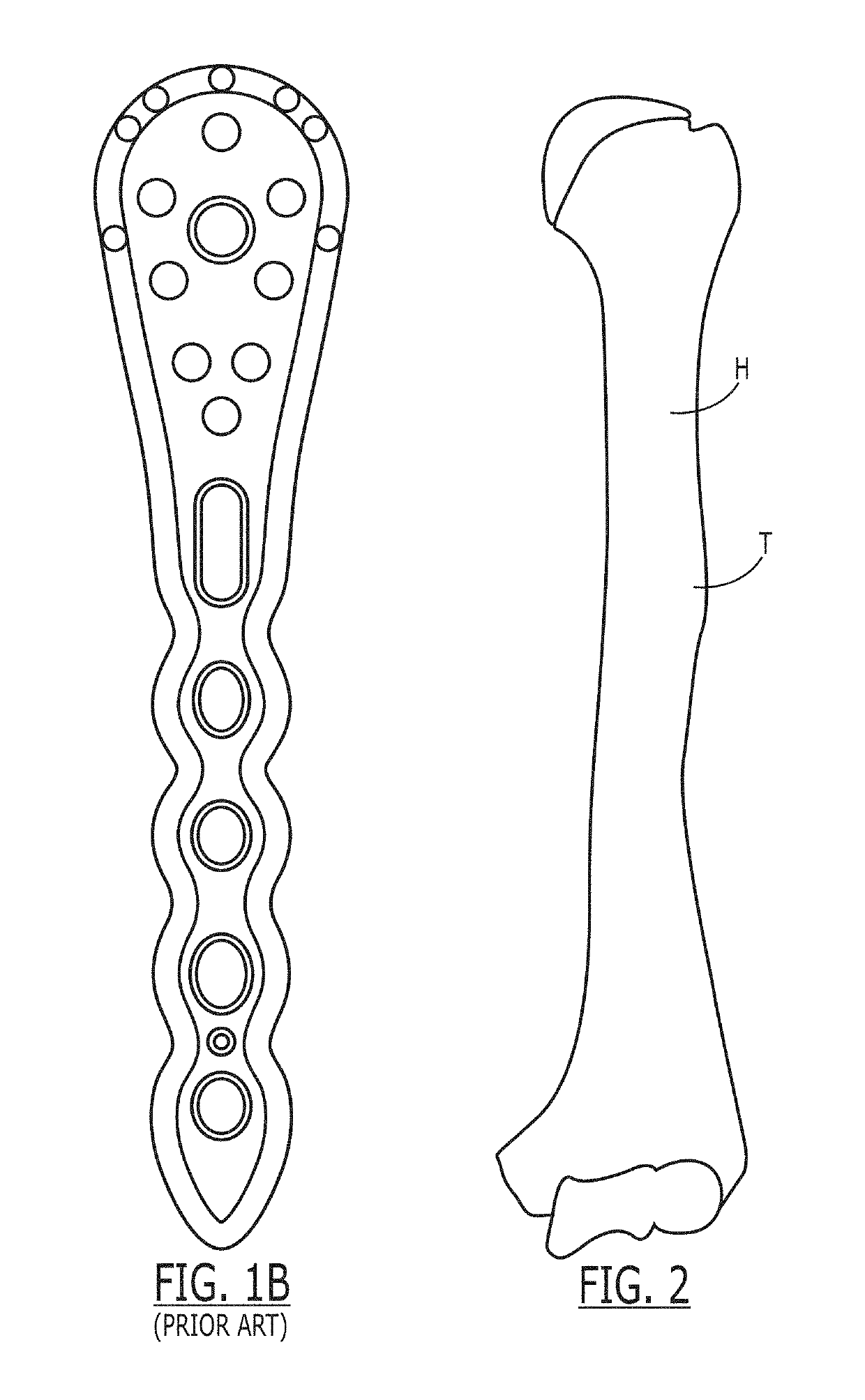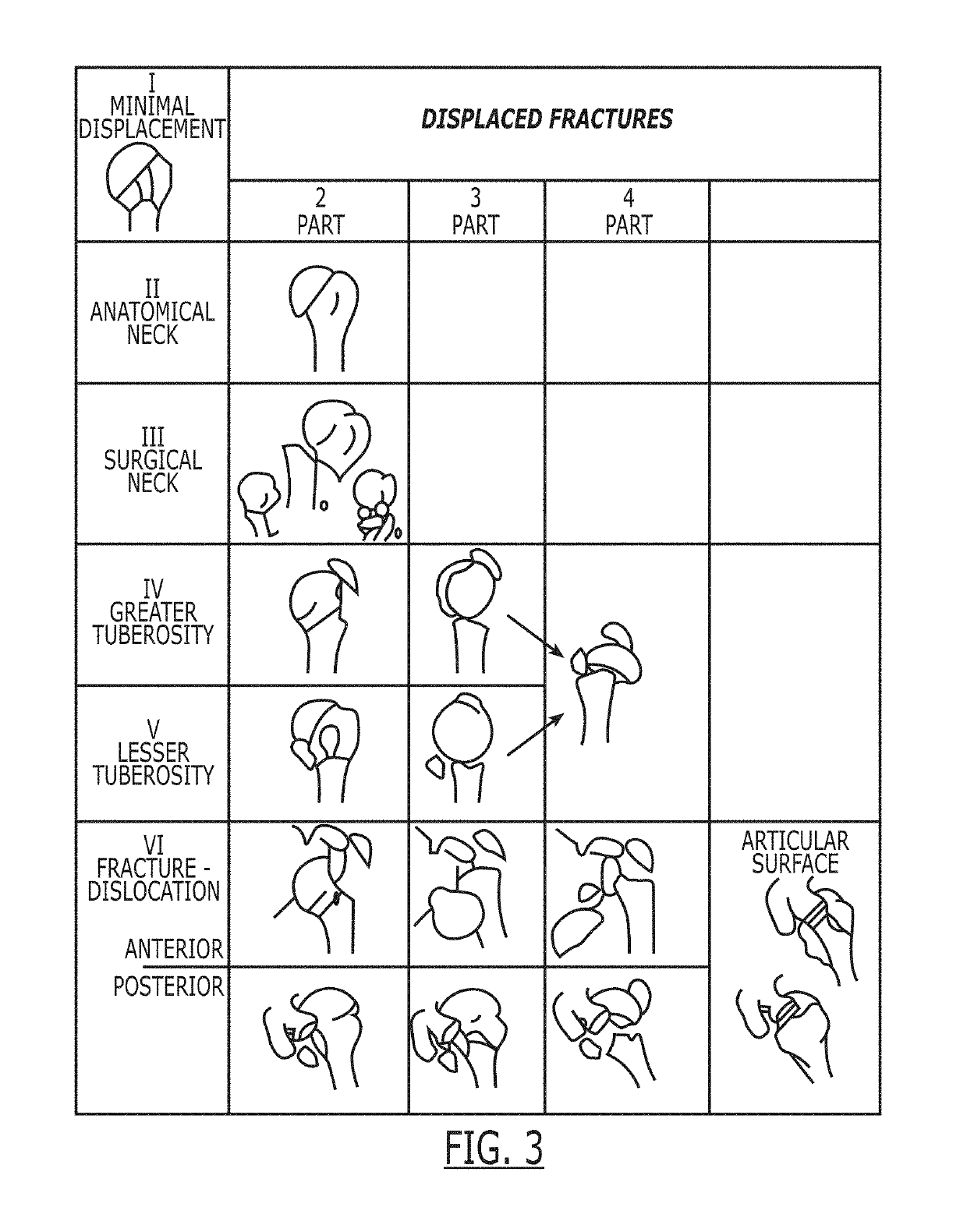Proximal humeral fracture plate
a humeral fracture and humeral head technology, applied in bone plates, osteosynthesis devices, fasteners, etc., can solve the problems of limiting the trajectory of screws within the humeral head, complicated repair of metaphysis and epiphysis fractures, and the fixation of plates and screws in these areas is typically more difficult, so as to promote the healing of fractures.
- Summary
- Abstract
- Description
- Claims
- Application Information
AI Technical Summary
Problems solved by technology
Method used
Image
Examples
Embodiment Construction
[0050]Corresponding reference numbers indicate corresponding parts throughout the several views of the drawings and specification. Corresponding reference numbers indicate corresponding parts throughout the several views of the drawings and specification.
[0051]FIG. 5A illustrates a proximal humeral plate 10 for use on a patient's left shoulder. An upper section 20 has a screw hole 24 for receiving a screw to fix the proximal humerus plate to a head of the left humerus H. The trajectory of the screw hole 24 is a lateral to medial orientation. A transitional section 30 has holes 34 for receiving a screw 36 (not shown) to fix the transitional section along a lateral cortex of the humerus H. Transitional section 30 is integral with the upper section 20 and is curved sufficiently to avoid a deltoid tuberosity T (seen in FIG. 2). A lower section 40 has screw holes 44 for receiving a screw 46 (not shown), the trajectory of screw hole 44 is an anterior to posterior orientation. Lower sectio...
PUM
 Login to View More
Login to View More Abstract
Description
Claims
Application Information
 Login to View More
Login to View More - R&D
- Intellectual Property
- Life Sciences
- Materials
- Tech Scout
- Unparalleled Data Quality
- Higher Quality Content
- 60% Fewer Hallucinations
Browse by: Latest US Patents, China's latest patents, Technical Efficacy Thesaurus, Application Domain, Technology Topic, Popular Technical Reports.
© 2025 PatSnap. All rights reserved.Legal|Privacy policy|Modern Slavery Act Transparency Statement|Sitemap|About US| Contact US: help@patsnap.com



